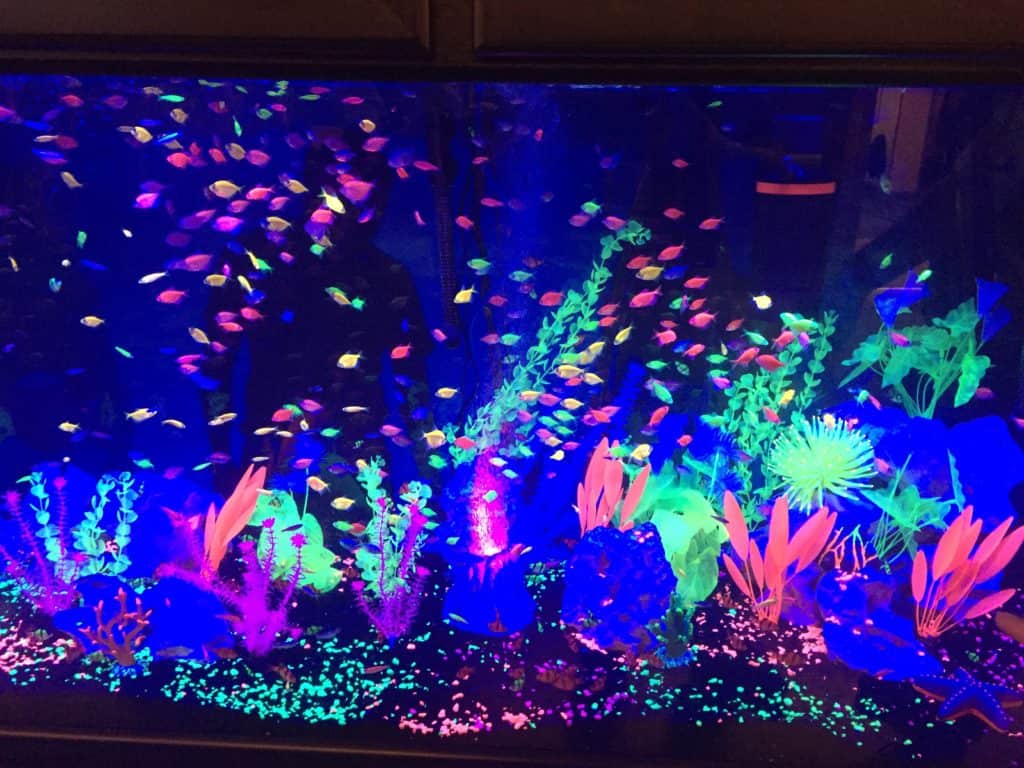When it comes to sick fish, the internet can be more confusing than helpful. As far as we know, Google does not have any medical degrees, so let’s clear some things up. Here are the most common fake fish diseases our offices comes across:
“My fish has ‘swim bladder.'”
This is the equivalent of you saying, “I have teeth.” Most teleost fish have a specialized organ known as a swim bladder in order to maintain neutral buoyancy in the water column. It may be very small or missing in some bottom-dwelling species and sharks and rays actually use the fat in their liver to maintain their buoyancy. For most pet fish, having a swim bladder is a good thing.
Swim bladder disorders is another internet sinkhole. Here’s the most important key point: whether positively buoyant (floating) or negatively buoyant (sinking), the #1 cause is the same: poor water quality. When fish get stressed from tank water that hasn’t been changed or maintained, one of the systems that can go awry is buoyancy control.
“My fish is ‘constipated.'”
The two causes of constipation is dehydration and not enough fiber in the diet. Freshwater fish, living in an environment that is hypoosmotic to their bodies, are constantly taking on more water into their tissues. Their kidneys and gills are responsible for removing this excess fluid. However, water moving through simple osmosis is a little faster process, leaving a happily non-dehydrated fish.
Okay, so dehydration is out, but what about fiber? Most commercial fish diets contain between 3-5g of fiber per 100g of food. This is more than enough to get things moving. Those “magic green peas” that are full of fiber contain 4g of fiber per 100g. THE SAME AS THEIR FOOD. Fiber doesn’t leech out of fish food as fast as some water-soluble vitamins, like Vitamin C, but old fish food it isn’t doing your fish any favors.
“Feed green peas to correct a ‘constipated,’ floating fish.”
Well, hopefully you read about constipation and buoyancy above, and here is the happy “cure-all” the internet is raving about: shelled green peas. These magic green globes work for the following 3 reasons, none of which are related to “constipation.”
- Green peas have little to no protein. This leads to less ammonia production from your fish and better water quality.
- Green peas sink in water. The main floating culprits are goldfish. Being physostomous fish, they have a duct between their esophagus and swim bladder. Vigorous surface feeding leads to lots of air being sucked in, over-inflating the swim bladder and causing your fish to float. Feeding sinking food prevents this.
- If your fishes’ food is older than 6 months, it has lost a lot of vitamin content. Peas contain a lot of Vitamin C, B, K & A, which can perk up a sick fish better than that ancient can of fish food.
“White stringy poop is bad and needs to be treated immediately.”
One of our newer articles addresses an odd internet claim. How most GI systems work to slide poop down the chute is to coat it in a thin layer of mucus. This prevents most animals from dying of a giant poop ball, humans included. Without food to stretch around it, this mucus layer will exit your fish, creating a long, stringy white poop. It is a harmless, natural process that only indicates your fish has not been eating. Or their water is too warm and their metabolism has increased their GI motility. If your fish is not eating, this is more serious and needs to be addressed.
The chances of your pet fish having an internal parasite are slim to none. If your fish comes into contact with any wild fish or wild-caught fish without any proper quarantine, there is a chance they may have picked something up. In the 7 years we have been in business with over 1,000 cases, we have diagnosed internal parasites TWICE. If your fishes’ poop isn’t trying to swim upstream, it isn’t alive.
“Don’t feed a sick fish.”
What medieval nonsense is this? Fish need energy to swim and illness requires even more energy. Decreasing your fishes’s diet to stunt their growth is cruel. Decreasing your fishes’ diet to combat an ammonia issue is just plain lazy. If you are having problems with your water quality, may we suggest the following:
- Do your regular water changes
- Maintain adequate filtration
- Do not overstock your tank/pond
- Understand “new tank syndrome”
If you have “diagnosed” fish diseases, get off the internet and do the following:
- Test your water quality. This is the #1 cause of disease in fish.
- If your water is bad, FIX IT. If you don’t know how, ask a professional, NOT THE INTERNET.
- Check your fishes’ food. If it is moldy/off-color/smells bad (something other than “fishy”), TOSS IT. Any fish food older than 6 months needs to be replaced.
- If fixing the water chemistry and feeding a good diet has not improved the issue, CALL YOUR VETERINARIAN. Yes, fish veterinarians exist. If you go for the “free” help online, remember, you get what you pay for. You can request help from us online.


Pingback: Egg Binding in Koi - Aquatic Veterinary Services
This is the funniest read and so helpful – I couldn’t have said it better myself. I’m so glad you’ve put this out there, and I’ll definitely be sharing a number of links from your site with my clients! (and maybe citing you on my own)